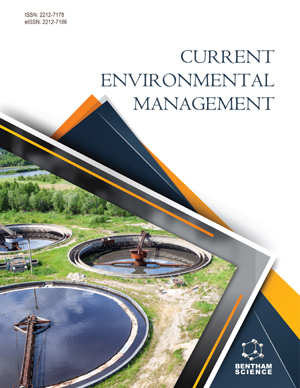Abstract
Aims: To understand the links between climate variability and hydrology in western Libya.
Background: This study represents the first comprehensive assessment of rainfall variability in western Libya at a regional scale. Objective: To assess temporal and spatial variability of rainfall in western Libya, based on data (1979-2009) from 16 rain gauges. Methods: The non-parametric Mann-Kendall method and Sen’s slop estimator were used to define changes in rainfall series and their statistical significance. Results: Coastal and mountainous time series showed decreasing trends at the annual, autumn, and spring scales, with very few exceptions. Notably, winter showed increasing trends, with the significant values of 1.94 and 0.88 mm/year at Sirt and Nalut, respectively. Desert stations showed increasing trends, especially at the annual scale, with the greatest significant increase on the order of 1.19 mm/year in Ghadames. For the regional rainfall trend analysis, annual, spring and autumn rainfalls decreased in the coastal and mountainous zones, with the highest significant decrease of 1.94 mm/year. Again, winter rainfall showed increasing trend over the whole study domain. Conclusion: Although most time series showed a tendency towards more drier conditions, most of the detected trends were statistically non-significant. This study will provide guidance for policy makers in their future planning to mitigate the impact of drought.Keywords: Rainfall trend, Sen’s slope estimator, Mann-Kendall test, change-point detection, Libya.
Graphical Abstract
[1]
IPCC Climate Change 2007: The Physical Science Basis Contribution of Working Group I to the Fourth Assessment Report of the Intergovernmental Panel on Climate ChangeSolomon, S, D Qin, M Manning, Z Chen, M Marquis, KB Averyt, M Tignor and HL Miller (eds). Cambridge, United Kingdom and New York, NY, USA: Cambridge University Press 2007.
[2]
Zelenakova M, Purcz P, Hlavatá H, Gargar I, Portela M. Statistical trends of precipitation in chosen climatic station in Slovakia and Libya. WSEAS Trans Environ Dev 2014; 10: 298-305.
[3]
El Kenawi AM, McCabe MF, Vicente-Serrano SM, Robaa SM, Lopez-Moreno JI. Recent changes in continentality and aridity conditions over the Middle East and North Africa region, and their association with circulation patterns. Clim Res 2016; 69(1): 25-43.
[http://dx.doi.org/10.3354/cr01389]
[http://dx.doi.org/10.3354/cr01389]
[4]
Patra JP, Mishra A, Singh R, Raghuwanshi NS. Detecting rainfall trends in twentieth century (1871-2006) over Orissa State, India. Clim Change 2012; 111(3-4): 801-17.
[http://dx.doi.org/10.1007/s10584-011-0215-5]
[http://dx.doi.org/10.1007/s10584-011-0215-5]
[5]
Alley RB, Berntsen T, Bindoff NL, et al. Contribution of Working.Group I to the Fourth Assessment Report of the Intergovernmental Panel on Climate Change, Solomon S, Qin D, Manning M, Chen Z, Marquis M, Averyt KB, Tignor M Miller HL (eds). Cambridge University Press: Cambridge, United Kingdom and New York, NY, USA 2007. Summary for policymakers. Climate change 2007 the physical science basis.
[6]
Morin E. To know what we cannot know: Global mapping of minimal detectable absolute trends in annual precipitation. Water Resour Res 2011; 47(7)
[http://dx.doi.org/10.1029/2010WR009798]
[http://dx.doi.org/10.1029/2010WR009798]
[7]
Karpouzos DK, Kavalieratou S, Babajimopoulos C. Trend analysis of precipitation data in Pieria Region (Greece). Eur Water 2010; 30: 31-40.
[8]
Meddi M, Assani A, Meddi H. Temporal variability of annual rainfall in the Macta and Tafna catchments, Northwestern Algeria. Water Resour Manage 2010; 24: 3817-33.
[http://dx.doi.org/10.1007/s11269-010-9635-7]
[http://dx.doi.org/10.1007/s11269-010-9635-7]
[9]
Nouaceur E, Murarscu O. Rainfall variability and trend analysis of annual rainfall in North Africa. . J Atmos Sci 2016; 2016: 12.
[http://dx.doi.org/10.1155/2016/7230450]
[http://dx.doi.org/10.1155/2016/7230450]
[10]
Rio S, Herrero R, Fraile R, Penas A. Spatial distribution of recent rainfall trends in Spain. Int J Climatol 2010; 31(5): 656-67.
[http://dx.doi.org/10.1002/joc.2111]
[http://dx.doi.org/10.1002/joc.2111]
[11]
Tabari H, Talaee PH. Temporal variability of precipitation over Iran: 1966-2005. J Hydrol (Amst) 2011; 396(3-4): 313-20.
[http://dx.doi.org/10.1016/j.jhydrol.2010.11.034]
[http://dx.doi.org/10.1016/j.jhydrol.2010.11.034]
[12]
Tramblay Y, El Adlouni S, Servat E. Trends and variability in extreme precipitation indices over Maghreb countries. Nat Hazards Earth Syst Sci 2013; 13(12): 3235-48.
[http://dx.doi.org/10.5194/nhess-13-3235-2013]
[http://dx.doi.org/10.5194/nhess-13-3235-2013]
[13]
Zeleriakoval M, Purcz P, Hlavata IG. Comparison of precipitation trends in Libya and Slovakia. nt. J River Basin Manag 2012; 172: 365.
[14]
Keuser AP. Precipitation patterns and trends in the metropolitan area of Milwaukee, Wisconsin. IJGER 2014; 1(1): 6.
[http://dx.doi.org/dc.uwm.edu/ijger/vol1/iss1/6]
[http://dx.doi.org/dc.uwm.edu/ijger/vol1/iss1/6]
[15]
Palizdan N, Falamarzi Y, Huang YF, Lee TS, Ghazali H. Regional precipitation trend analysis at the Langat River Basin, Selangor, Malaysia. Theor Appl Climatol 2014; 117(3-4): 589-606.
[http://dx.doi.org/10.1007/s00704-013-1026-6]
[http://dx.doi.org/10.1007/s00704-013-1026-6]
[16]
Trigo RM. Circulation weather types and their influence on the precipitation regime in portugal. Int J Climatol 2000; 20(13): 1559-81.
[http://dx.doi.org/10.1002/1097-0088(20001115)20:13<1559:AID-JOC555>3.0.CO;2-5]
[http://dx.doi.org/10.1002/1097-0088(20001115)20:13<1559:AID-JOC555>3.0.CO;2-5]
[17]
Kansakar SR, Hannah DM, Gerrard J, Rees G. Spatial pattern in the precipitation regime in Nepal. Int J Climatol 2004; 24(13): 1645-59.
[http://dx.doi.org/10.1002/joc.1098]
[http://dx.doi.org/10.1002/joc.1098]
[18]
Panthi J, Dahal P, Shrestha ML, et al. Spatial and temporal variability of rainfall in the gandaki river basin of nepal himalaya. Climate (Basel) 2015; 3(1): 210-26.
[http://dx.doi.org/10.3390/cli3010210]
[http://dx.doi.org/10.3390/cli3010210]
[19]
Eddenjal AS, Jhider AM. Temporal and spatial patterns of precipitation over al jabal al akhdar area. LARCJI 2012; 3(3): 98-103.
[20]
Ahani H, Kherad M. Non-parametric trend analysis of the aridity index for three large arid and semi-arid basins in Iran. Theor Appl Climatol 2013; 112(3-4): 553-64.
[http://dx.doi.org/10.1007/s00704-012-0747-2]
[http://dx.doi.org/10.1007/s00704-012-0747-2]
[21]
Donat MG, Peterson TC, Brunet M, et al. Changes in extreme temperature and precipitation in the Arab region: long‐term trends and variability related to ENSO and NAO. Int J Climatol 2014; 34(3): 581-92.
[http://dx.doi.org/10.1002/joc.3707]
[http://dx.doi.org/10.1002/joc.3707]
[22]
Winstanley D. The North African flood disaster, September 1969. Weather 1970; 25: 390-403.
[http://dx.doi.org/10.1002/j.1477-8696.1970.tb04128.x]
[http://dx.doi.org/10.1002/j.1477-8696.1970.tb04128.x]
[23]
El-Tantawi AM. Climate change in Libya and desertification of Jifara Plain: Using geographical information system and remote sensing techniques (Doctoral dissertation, Verlag nicht ermitte bar)
[25]
Sayemuzzaman M, Jha MK. Seasonal and annual precipitation time series trend analysis in North Carolina, United States. Atmos Res 2014; 137: 183-94.
[http://dx.doi.org/10.1016/j.atmosres.2013.10.012]
[http://dx.doi.org/10.1016/j.atmosres.2013.10.012]
[26]
Wang W, Chen X, Shi P, Van Gelder P. Detecting changes in extreme precipitation and extreme streamflow in the Dongjiang River Basin in southern China. Hydrol Earth Syst Sci 2008; 12(1): 207-21.
[http://dx.doi.org/10.5194/hess-12-207-2008]
[http://dx.doi.org/10.5194/hess-12-207-2008]
Article Metrics
 3
3

